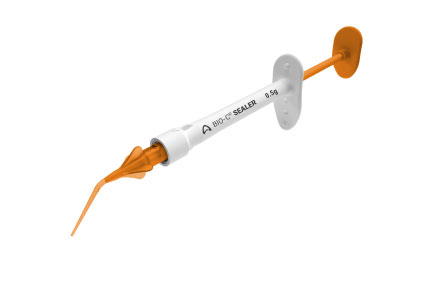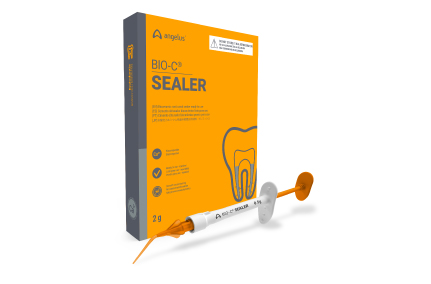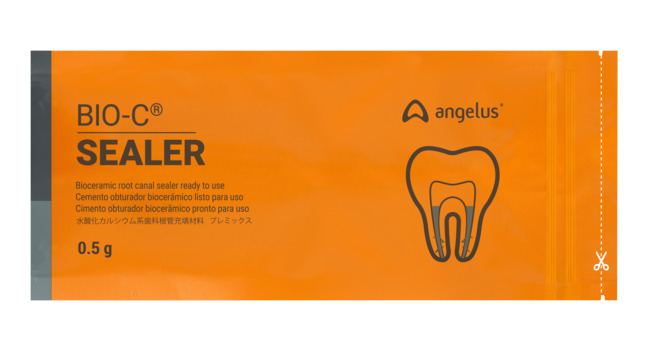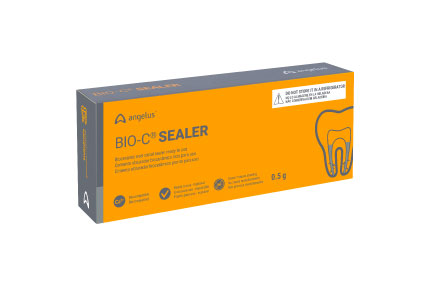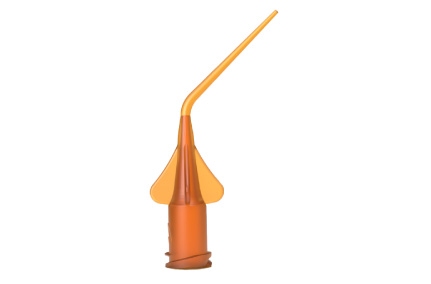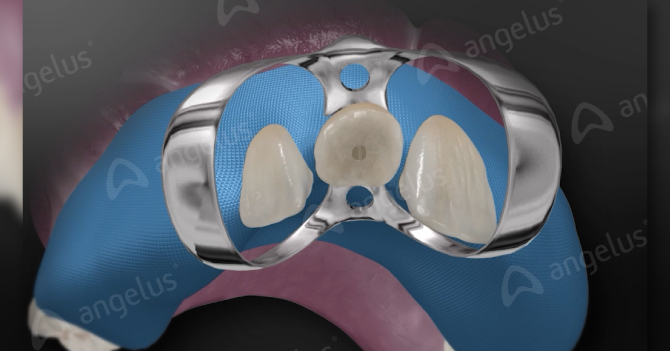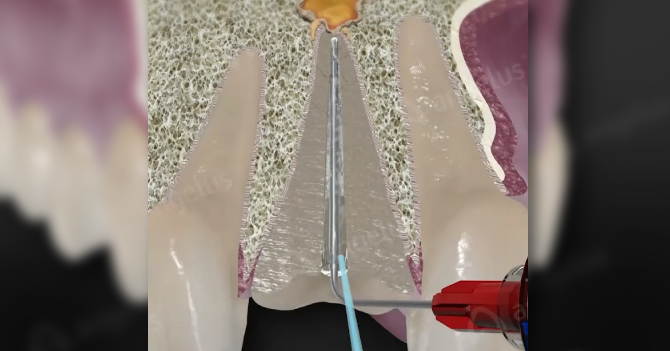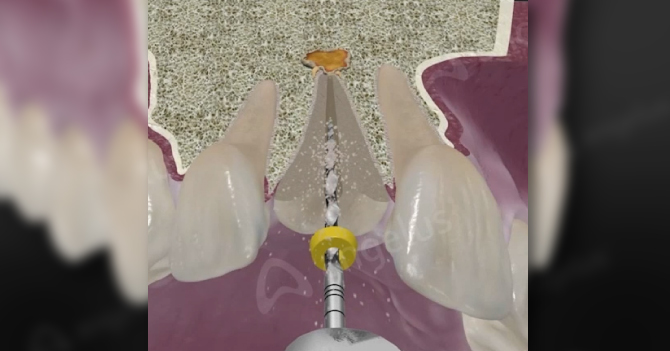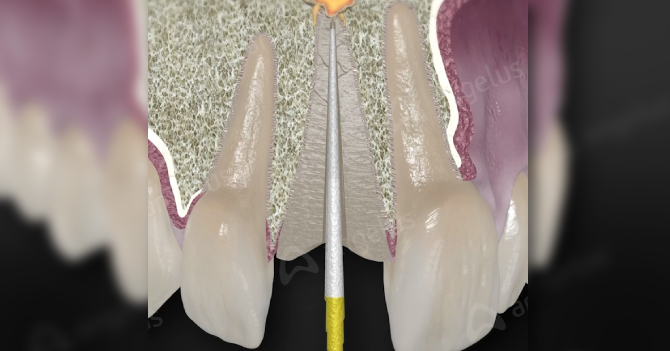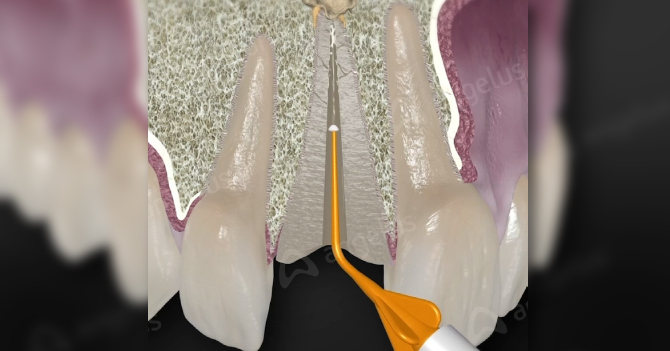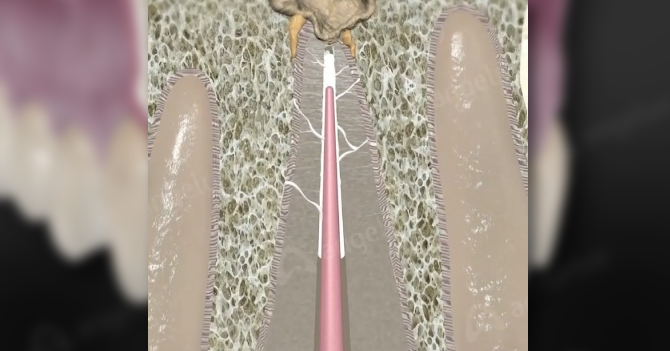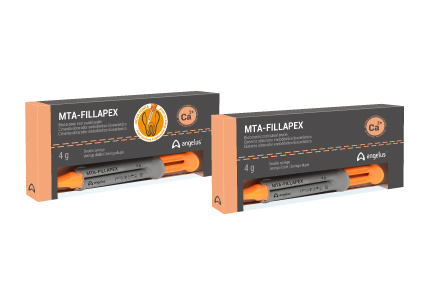
BIO-C ® SEALER
Mais que biocompatívelDescrição
Cimento obturador biocerâmico pronto para uso.
Indicação
Obturação de canais radiculares de dentes permanentes;
Tratamento de reabsorção interna.
Características e Benefícios
Pronto para uso
Dispensa espatulação, aplicação direta no canal
Não resinoso
Fácil limpeza
Alta liberação de íons Ca
Estimula a regeneração tecidual
Alta alcalinidade (ph ~ 12)
Ação bactericida
Fluidez adequada
Permite a obturação de canais acessórios
Expansão de presa e adesão química à dentina
Impede infiltração bacteriana
Alta Radiopacidade
Excelente visualização radiográfica
Apresentação
Ref. 3822 - 01 seringa com 0,5 g e 05 pontas aplicadoras
Ref. 3823 - 4 seringas com 0,5 g com 20 pontas aplicadoras
Materiais Informativos
Perguntas Frequentes
A técnica recomendada pela empresa é utilizar com cones, pois esse cimento, devido a sua característica biocerâmica, é mais difícil de ser removido, caso seja necessário.
O tempo de presa é em média ≤ 240 minutos, porém depende da umidade local.
Não, a umidade, que inicia a presa do material, é oriunda dos tecidos apicais e dos canalículos dentinários.
BIO-C® Sealer não possui base resinosa. Sua viscosidade é dada por um álcool de cadeia longa, o polietilenoglicol. Por isso, o produto é mais biocompatível e de mais fácil limpeza.
O armazenamento deve ser em local seco e arejado, e ele NÃO DEVE SER ARMAZENADO EM GELADEIRA.
O BIO-C® Sealer apresenta em sua composição silicatos de cálcio que em contato com a umidade local são hidratados produzindo uma estrutura de silicato de cálcio hidratado e os íons de cálcio e hidroxila. Uma parte do material na forma de íons de cálcio e hidroxila podem ser absorvidos rapidamente em contato com tecidos perirradiculares se acidentalmente extravasado. No entanto, o silicato de cálcio hidratado é uma matriz de sílica que em conjunto com o radiopacificador (óxido de zircônio) representam a parte insolúvel do produto, e apresentam alta estabilidade química e dificilimamente são absorvidas ou solubilizados.
Sim, o produto pode ser utilizado tanto para a técnica de cone único como para a técnica de cones acessórios.
BIO-C SEALER® é um cimento 100% biocerâmico, não resinoso, pronto para uso. MTA-Fillapex é um cimento biocerâmico resinoso (resina de salicilato), pasta x pasta, com 13% de carga biocerâmica no produto.
Em média, utilizando a ponta aplicadora, é possível realizar de 10 a 12 condutos.
Sim. Nas técnicas de obturação que utilizam o aquecimento da guta percha, a temperatura máxima atingida do equipamento é de 200°C. O BIO-C® Sealer se mantém estável nessa temperatura, diferente de alguns outros cimentos que se degradam em temperaturas próximas a 144ºC.
A “reação alcalina” é a reação de hidratação do produto que em contato com a umidade do meio tem como produto Ca(OH)2 – hidróxido de cálcio e contribui para o aumento do pH | alcalinidade, clinicamente essa reação de hidratação depende muito das condições do canal radicular onde o sealer será inserido, conduto mais ou menos úmido.
Nas condições padronizadas de umidade a reação de hidratação “reação alcalina” leva em média 28 dias, no entanto esse processo ocorre em fases (I, II, III, IV e V) com variação nas quantidades de Ca(OH)2 produzida ao longo do tempo.
A melhor reação biológica se dá com o BIO-C® Sealer, devido ao seu tamanho menor de partículas, que acaba sendo mais reativo, e também a concentração do silicato de cálcio na formulação.
Ao utilizar um cimento biocerâmico, pode-se prosseguir à restauração do elemento dental na mesma sessão.
O cimento biocerâmico pode ser removido com solventes de guta percha (como por exemplo ácido cítrico ou eucaliptol), e com limas manuais e/ou limas mecanizadas, ou com o uso de insertos ultrassônicos.
Sim, caso não seja feito o preparo logo após a obturação dos canais, deve-se aguardar a presa do cimento e logo após, proceder ao preparo para a colocação do pino.
Não é necessária nenhuma conduta específica. O recomendado é acompanhar o caso, e verificar remissão de sinais e sintomas.
BIO-C® Sealer é recomendado apenas para dentes permanentes.
Onde comprar?
Consulte a disponibilidade dos nossos produtos em seu país.
